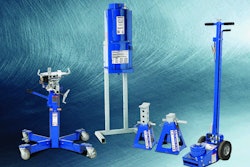By Bill Wade, Wade & Partners
Nearly 30 percent of vehicle parts’ retailers’ business is vulnerable to Amazon. This becomes a much bigger deal, as research shows that a 25 percent revenue loss is the point at which channels collapse (see bookstores, music, taxicabs, newspapers, cameras and film).
When Internet sellers reach 20-25 percent of store to end-user market share — Internet guru Guru Hariharan’s (his real name!) “crushing point” — these traditional channel leaders panicked. They felt the need to compete solely on price, then to consolidate wildly, try new geography or end-user markets, cut employees and marketing. Fini!
That said, e-commerce companies won’t be able to replicate the supply chain and distribution needed in the vehicle aftermarkets near-term to be an immediate threat. The ~30 percent product vulnerability estimate does not mean 30 percent will materialize over the short term.
Even if 30 percent is correct, the rate of change could be controlled by the traditional brick and mortar retailer/distributor (‘wholetailers’) as opposed to e-tailers. The framework Home Depot created to estimate its online product vulnerability is useful in identifying the categories that could most easily migrate online:
- “Vulnerable” product categories are those that haven’t changed in the last six years;
- There has been minimal online migration of the vulnerable group.
This examination could well play out for the heavy-duty service and parts retailers/distributors.
How does AMZ’s investment in innovation increase value for B2B buyers?
Following the news feed for Amazon’s daily innovation announcements is now a full-time job. Most of these innovations indirectly increase value for Prime customers, while also bringing in new Prime customers and increasing retention. Then there is a domino effect as these Primers take their AMZ shopping expectations to work, causing an accelerating increase in B2B sales.
Amazon is testing Seller Flex, an in-house delivery service being offered to the platform’s third-party merchants that could reduce warehouse inventory and make more products available for free two-day shipping. It allows Amazon to manage the logistics between pickup at merchant warehouses and delivery to customers, though UPS and FedEx could still carry out the delivery processes.
Because Amazon has intersecting, reinforcing platforms, all innovation at Amazon Web Services indirectly boosts B2C and B2B customer value. And this increase is often exponential due to chip and bandwidth power. Here are just a few examples:
- Alexa developers will use increased cognitive-computing speed, tools, and algorithms to vastly improve voice commerce by 2019;
- Automated replenishment solutions via the Internet of Things (IoT) applications will improve;
- Product information and education video quality will continue to improve and customers will continue to access just-in-time “pull” educational experiences, which will force the “push” model reps use for product pitches to change;
- Bot-controlled inventory management is increasing the flow of inventory from Asian factories to our doorsteps with better fill rates, making it likely that a distributor can’t match Amazon reseller variety, pricing, and effective fill-rates on the most profitable warehouse SKUs.
Who will love this?
Old-school customers? Maybe. Millennials? Absolutely! A recent comScore survey of 18-34-year olds discovered that the Amazon phone app was their No. 1 most essential app. As these digital natives join the workforce, they double-check their supply needs at Amazon and they often find better solutions there than from their employer’s rigid traditional contract supply programs.
Complaints from the shop to the purchasing department then prompt complementary deals with AMZ-BIZ, and first year spend can quickly approach 20 percent of the total. And when Millennials become the buyers, other surveys reveal that they see both outside and inside sales reps as an inconvenience when doing quick 24/7 rebuys of commodities.
You should be asking yourself:
- How fast will channel rep value for commodity rebuys fall?
- What is your 2019 rep vision and transition plan?
Amazon owns your next-gen customers. What are your innovative ideas for minimizing sales losses to Amazon? Are you considering partnering with this frenemy? How will you out-innovate their value and within which customer niches?
Now this isn’t to say beating Amazon would be easy. From our experience working with large established companies, CEO’s who are trying to convince their teams to embrace disruptive business models often feel a bit like they’re trying to steer the Titanic away from an iceberg.
It’s a daunting task, yet it can be done. Still, there are other managers who are simply waiting around and hoping regulators will be the ones to stop Amazon. They shouldn’t wait too long.
They’d better start heading for the life boats.











